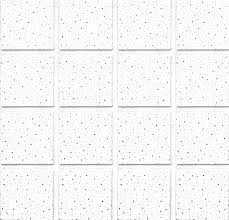Nov . 04, 2024 23:34 Back to list
flush ceiling access panel
Understanding Flush Ceiling Access Panels A Comprehensive Guide
In contemporary architectural design and construction, the importance of accessibility and maintenance cannot be overstated. Flush ceiling access panels are crucial components that facilitate easy access to the concealed areas of a building, allowing for efficient maintenance of electrical, plumbing, and HVAC systems. This article explores the significance, features, types, and installation processes associated with flush ceiling access panels.
What are Flush Ceiling Access Panels?
Flush ceiling access panels are designed to blend seamlessly with ceilings, offering a clean, unobtrusive look. Unlike traditional access panels that may protrude or disrupt the aesthetic flow of a ceiling, flush panels are engineered to sit level with the surrounding surface. This characteristic makes them particularly desirable in both commercial and residential environments, where aesthetics play a significant role.
Importance of Flush Ceiling Access Panels
1. Accessibility The primary function of access panels is to provide quick and easy access to the infrastructure that lies behind the ceiling. This includes electrical wiring, plumbing connections, and HVAC ducts. By having flush ceiling access panels installed, maintenance staff can efficiently address issues without extensive dismantling or repairs.
2. Enhanced Appearance Many architects and interior designers prefer flush ceiling access panels because they contribute to a clean and modern look. These panels often come in various finishes, allowing them to be painted or treated to match the ceiling seamlessly.
3. Durability and Security Flush ceiling access panels are typically made from durable materials like metal or high-grade plastic, ensuring they can withstand minor impacts and wear. Additionally, many models incorporate locking mechanisms, which provide security by preventing unauthorized access to sensitive areas.
Types of Flush Ceiling Access Panels
Flush ceiling access panels come in various designs and materials to suit different applications and aesthetic preferences
. Here are some common types1. Plastic Access Panels Lightweight and resistant to moisture, plastic panels are ideal for areas prone to humidity, such as bathrooms and kitchens. They are easy to install and can be painted to match the ceiling.
2. Metal Access Panels Offering increased durability and security, metal panels are often used in commercial settings. They are available in various thicknesses and finishes, including galvanized steel and aluminum.
flush ceiling access panel

3. Fire-Rated Access Panels For installations that require additional safety measures, fire-rated access panels ensure compliance with building codes by resisting the spread of fire and smoke.
4. Acoustic Access Panels These panels are designed to improve sound insulation while providing accessibility. They're ideal for environments where noise reduction is a priority, such as theaters and recording studios.
Installation Process
Installing flush ceiling access panels requires careful planning and execution to ensure they blend harmoniously with the ceiling and provide the necessary functionality. Here’s a general overview of the installation process
1. Planning Identify the location of the access panel based on the systems that need to be serviced. Ensure that the chosen location does not interfere with existing structures, such as beams or ductwork.
2. Measuring and Cutting Measure the dimensions of the chosen access panel and mark the appropriate cutout on the ceiling. It’s crucial to ensure precise measurements to avoid damaging adjacent materials during installation.
3. Framing Depending on the panel type, create a frame if necessary, using wood or metal studs to support the panel securely.
4. Installation Insert the panel into the cutout. For flush installations, it may require some adjustment to ensure it is level with the ceiling surface.
5. Finishing Touches Once installed, the edges can be caulked or painted to blend with the ceiling, creating an invisible access point.
Conclusion
Flush ceiling access panels are indispensable elements in modern construction and design, offering a balance between functionality and aesthetics. They promote efficient maintenance, enhance the visual appeal of spaces, and provide essential access to mechanical systems. Whether in commercial buildings or residential homes, understanding the features and benefits of flush ceiling access panels can significantly aid in making informed decisions for any construction or renovation project. As the importance of accessibility continues to rise, flush ceiling access panels will undoubtedly remain a vital component in the architecture of the future.
-
Durable Ceiling T Grid Systems | Easy InstallationNewsAug.29,2025
-
PVC Gypsum Ceiling: Durable, Laminated Tiles for Modern SpacesNewsAug.28,2025
-
Pvc Gypsum Ceiling Is DurableNewsAug.21,2025
-
Mineral Fiber Board Is DurableNewsAug.21,2025
-
Ceiling Tile Clip Reusable DesignNewsAug.21,2025
-
Ceiling T Grid Modular DesignNewsAug.21,2025







